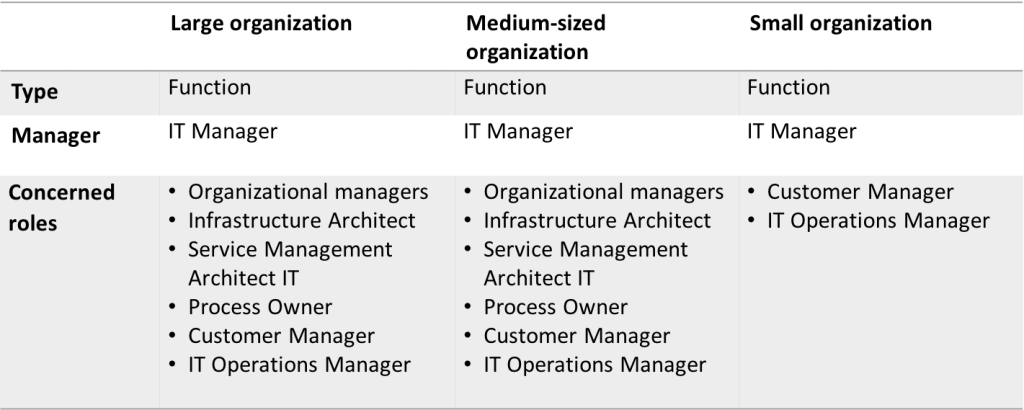An IT organization has no intrinsic value, rather its existence is justified by the fact that it makes the company’s operations more efficient. The IT Steering Group function is the primary contact point for the business’s management and has the ultimate responsibility that the IT services delivered achieve the efficiencies intended for the business. The IT Steering Group is located at the strategic level in the governance model, and should focus on control of the IT organization. If there is a formal managerial body for the IT organization, then that is what constitutes the IT Steering Group.


Purpose
The primary purpose of the IT Steering Group is to be the function which actively controls and continually improves the value of IT for the business. The function is the highest decision-making body within the IT organization and thus manages issues that are escalated from the tactical level.
Other aims are to represent the IT organization at strategic level in relation to the business and suppliers and also to produce objectives and control operations within the IT organization.
Responsibility
The IT Steering Group is responsible for contact with the business’s management team and also contact at strategic level with selected suppliers.
All questions of an overall or strategic character should be discussed in the IT Steering Group, as well as questions which it is not possible to easily determine at tactical level. The IT Steering Group is responsible for producing the IT strategy and the IT policy, and also that they are implemented and observed in the organization. The IT Steering Group’s responsibility also includes continually updating with what is happening in the business and also what similar IT organizations are doing and general developments in the IT industry.
The function should also be responsible for producing a service portfolio that defines which types of IT services should be delivered to the business, what value they provide and how they should be financed.
Activities and working method
The working method within the IT Steering Group is equal with the work in any management in any organization. Each participant represents a specialist skill, but the overall responsibility is to guide and improve the IT organization.
The IT Steering Group needs to manage different types of questions. In order to manage the work effectively it is beneficial if different meetings have different themes. Operational governance issues at one meeting and more long-term strategic issues at the next meeting. The important thing is that there is a clarity and a structure in the work so that the members can prepare themselves prior to each meeting.
Openness and visibility are important for the IT Steering Group. If someone wants to send an issue to the function, then there must be a documented procedure for how this should be done and decisions taken should be clearly communicated to the IT organization.
Typical activities for the IT Steering Group are:
- Producing and communicating a strategy for the IT organization
- Producing and ratifying an IT policy
- Managing issues escalated from the tactical level
- Supporting the business’s management in major operational changes
- Producing and determining the content in a service portfolio
Input
Input to the function consist primarily of the assignment from the business’s management as well as what is happening in the IT industry in general. But also of reports, measurement data and proposals for improvements from the IT organization as a whole. In order to structure all the issues that are received, the Continual Service Improvement process is used.
Output
The overall output from the function is a strategic plan for the IT organization. More specifically, outputs consist of:
- Decisions in strategic questions
- Service Strategy for the IT organization
- Service portfolio
- Policies
- Defined course of action for the IT organization
Documentation
All documents produced by the function must be available in a business system. The most important documents are:
- Service Strategy for the IT organization
- IT Service portfolio
- IT policy
Relationships with other processes and functions


